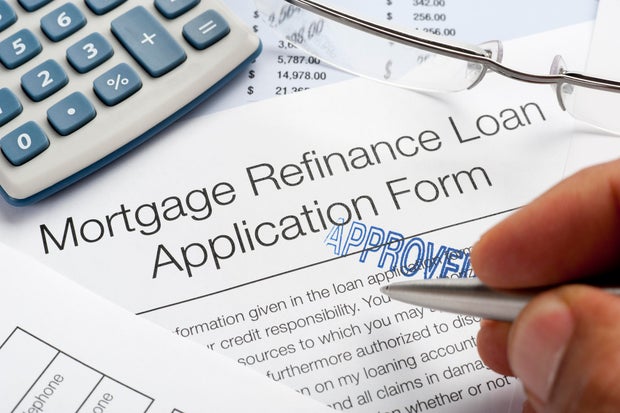Getty Images
Mortgage interest rates more than doubled from 2021 to 2023. But while they’re still significantly higher than they were a few years ago, they’re down by more than a full percentage point from the end of 2023 — and they could fall even further in the weeks and months ahead.
Thanks to a consistently cooling inflation rate, which dropped for the fourth consecutive month in July, a cut to the federal funds rate appears imminent when the Federal Reserve meets again in September. And while the Fed doesn’t directly dictate what lenders offer borrowers, it does influence rates. So a cut there could mean a cut to mortgage and mortgage refinance rates, too.
This could be particularly beneficial for current homeowners saddled with high mortgage rates. But they don’t necessarily need to wait until September to start saving. Multiple signs indicate a mortgage refinance could be worth pursuing now. Below, we’ll break down four of them.
Start by seeing what mortgage refinance rate you could secure here.
4 signs you should refinance your mortgage now
While mortgage refinance rates may fall even further in the months ahead, you could benefit from acting now. Specifically, you may want to act if any of the following apply to you:
You can get a rate one full point lower than what you have now
Most economists recommend waiting for a mortgage refinance rate that’s a full point lower than your current one before acting. Today’s mortgage refinance rate for a 30-year loan is 6.54%. So if you have a mortgage rate of 7.54% or higher with a similar loan length, then you should consider acting now. At 5.96% currently,15-year mortgage refinance rates are even lower. However, that condensed payoff time may be difficult to manage if your current loan has a longer lifespan. Still, it’s worth exploring if it means paying a full point lower each month.
Compare your mortgage refinance rate options online today.
You can get a rate half a percentage point lower than what you have now
While a mortgage rate that’s one point lower than your current one is generally worth pursuing, even half a percentage point could result in significant savings. And that could be worth it for borrowers now, especially as inflation and other high borrowing costs still need to be accounted for.
For example, if you have a current mortgage rate of 7.04% but can lock in a 6.54% rate, it would save you $133 a month on a $398,000 mortgage (the average home price right now). That drop from $2,659 to $2,526 monthly may or may not be significant, depending on your financial situation. Just don’t dismiss it without first calculating the potential savings, even if they’re not as substantial as a full percentage point reduction.
You can secure a fixed rate
You may have pursued an adjustable-rate mortgage in recent years in an attempt to secure a below-average rate. But if that rate is set to expire — and rise — soon, then you may want to refinance your mortgage. Not only could this potentially secure you a lower rate, but that rate will be fixed and will remain the same for the full life of the loan (unless refinanced). That security and predictability will allow you to focus on paying down other debts without worrying about changes to your mortgage payments.
You can get a rate more than one point lower than what you have now
While rare, it’s possible to secure a mortgage refinance rate more than a full percentage point lower than what you currently have. It may require purchasing mortgage points (a fee to the lender) to obtain that lower rate, but it could be worthwhile for the right borrower. This is particularly true if the rate that can be secured by pursuing this strategy is low enough that a refinance in the future becomes unnecessary. It may not be available to everyone, and it may not be affordable for each homeowner (buying points on a refinance will require both closing costs and paying for the points), but if it means a mortgage rate drop of 1.25% or higher, it’s worth exploring right now.
Start calculating your potential mortgage refinance savings here now.
The bottom line
Homeowners coping with elevated interest rates may now have an opportunity to realize significant savings with a refinance loan. If they can secure a mortgage point more than a full point lower than what they currently have, then they should strongly consider acting now. But a full percentage point and even half a point could be valuable for the right owner. And if they can refinance into a fixed rate, they could save money and enjoy the reliability of fixed payments for the remainder of their loan. Just be sure to carefully weigh the mortgage refinancing closing costs against the savings to ensure that the new loan terms work in your favor. And don’t refinance unless you’re planning on staying in the home long enough to recuperate any out-of-pocket costs; otherwise, you’re likely better off maintaining your current interest rate, even if it’s slightly higher.


